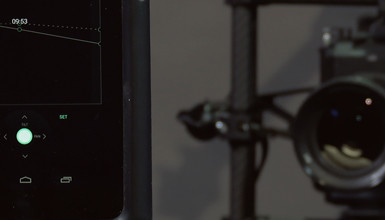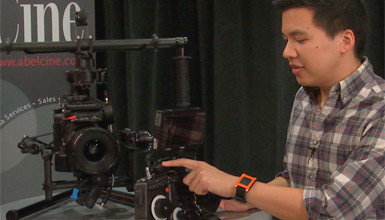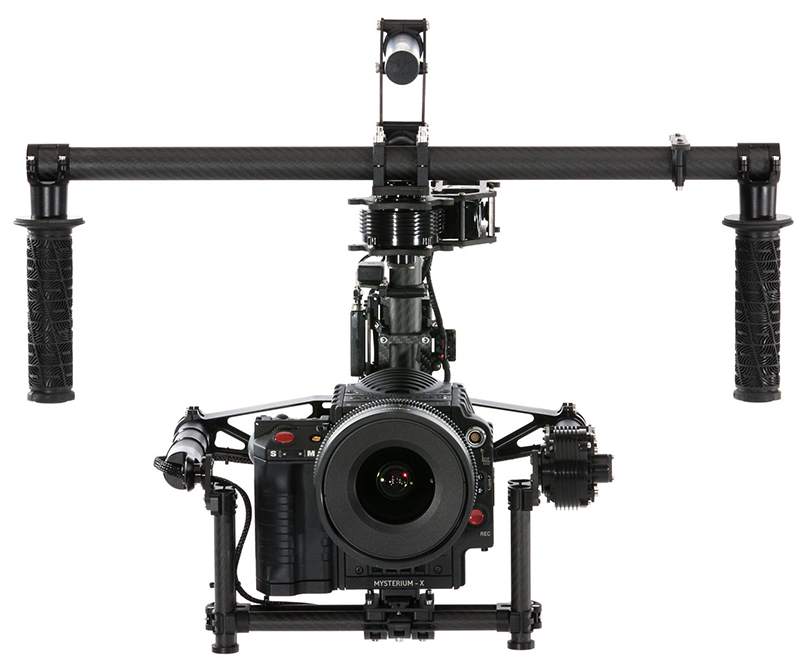
Building on the knowledge garnered from their stabilized multi-rotor camera platforms, Freefly was able to adapt this technology to a handheld 3-axis stabilization system with the Mōvi M10. Like many stabilization systems, the M10 can be used with a single operator in what Freefly calls Majestic Mode. In this mode, the operator is responsible for movement as well as framing, as the M10 will interpolate the movement of the operator for smooth pans and tilts. You can adjust various parameters for these interpolations such as reaction time and speed via the bluetooth connected Android app. Also, you can optionally lock the tilt so that your camera always stays level with the horizon while allowing you to pan in Majestic Mode. With some practice, the M10 becomes a natural extension of your body as you move around, and offers results that are similar in spirit to a gimbal system.
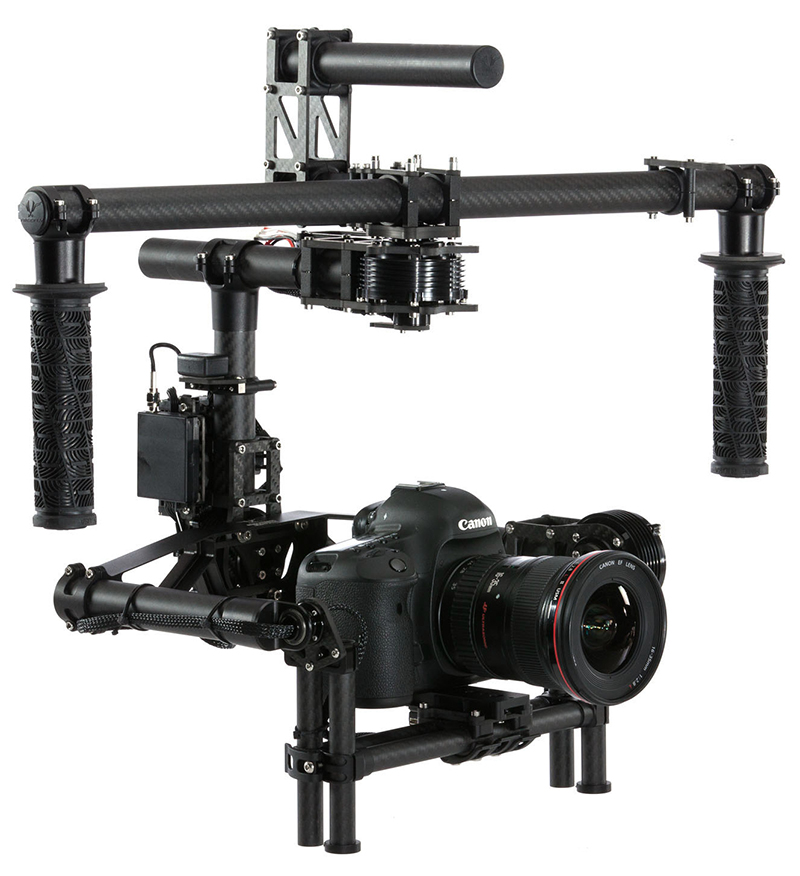 What we're most excited about is the Mōvi's dual-operator mode, because this is where the system truly shines. On most stabilized systems, the camera can go where the operator goes, but conversely, the camera must go where the operator goes -- since the operator is integral to the stabilization platform, he acts as both the image framer and the vehicle for movement. With the Mōvi in dual-operator mode, now the image framing and movement can be two separate thoughts. The vehicle for movement (ie, you) can be detached from the camera while the frame is maintained by the second operator.
What we're most excited about is the Mōvi's dual-operator mode, because this is where the system truly shines. On most stabilized systems, the camera can go where the operator goes, but conversely, the camera must go where the operator goes -- since the operator is integral to the stabilization platform, he acts as both the image framer and the vehicle for movement. With the Mōvi in dual-operator mode, now the image framing and movement can be two separate thoughts. The vehicle for movement (ie, you) can be detached from the camera while the frame is maintained by the second operator.
Some of the first examples we've seen of this is from the Vincent Laforet short MōVI when the camera is passed from one hand to the other through a large aerial hoop, or through the window of a cab as the operator is rollerblading alongside (check out the BTS video to see exactly how they did it). Because the camera framing is controlled by the second operator via remote control, the first operator can focus on positioning the camera in the best position for the shot.
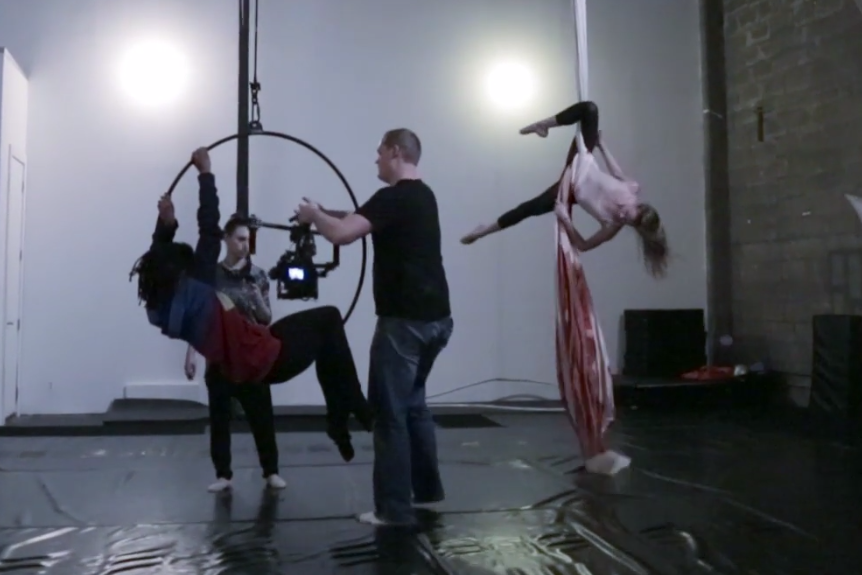 The options are practically endless -- not only could you pass the M10 from one hand to the other, you could pass the camera to another operator or structure. Check out the following Mōvi test also shot by Vincent Laforet.
The options are practically endless -- not only could you pass the M10 from one hand to the other, you could pass the camera to another operator or structure. Check out the following Mōvi test also shot by Vincent Laforet.
As seen in the video, being able to clip the M10 to a rope means you can combine a flying tracking shot with an elevation change like a jib in one smooth movement. The system will keep the frame locked to whatever the remote control operator has set, regardless of who (or what) is holding it.
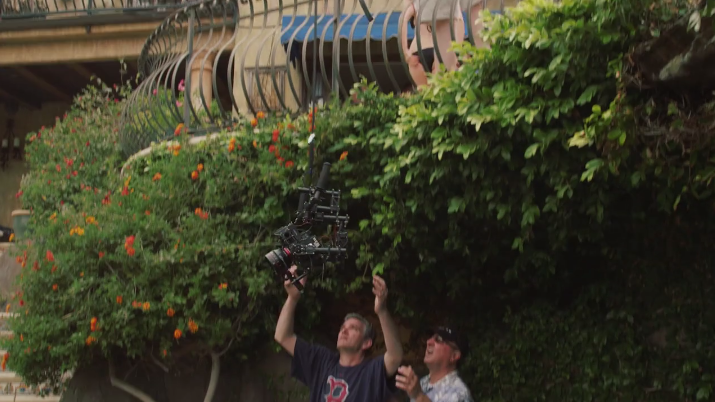 We're very excited to see how the Mōvi adds to the language of camera movement, and we're proud to announce that AbelCine is now a US reseller of the Mōvi line. Be sure to check out our New York and Burbank showrooms for demonstrations and join our mailing list to stay informed of further Mōvi developments.
We're very excited to see how the Mōvi adds to the language of camera movement, and we're proud to announce that AbelCine is now a US reseller of the Mōvi line. Be sure to check out our New York and Burbank showrooms for demonstrations and join our mailing list to stay informed of further Mōvi developments.















